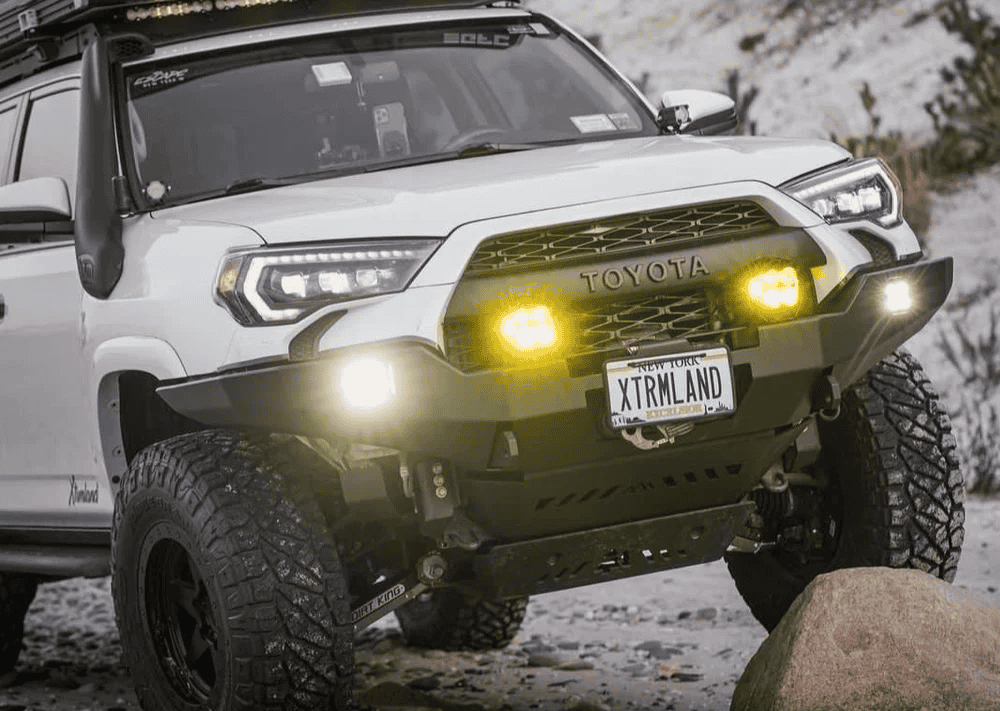Overland Vehicles

A capable off grid truck starts with a stable electrical plan. Size your battery for real daily use, not wishful thinking. A single 100 to 200 amp hour lithium pack covers a fridge, lights, fans, pumps, and device charging for most weekends. For longer trips, double the capacity or pair with a smart DC to DC charger so the alternator quickly replenishes the bank while driving.
Solar extends range but should not be the only charging source. A flat roof panel array in the 200 to 400 watt range offsets daytime loads and tops up while parked. If you run induction or power tools, add a pure sine inverter of 1000 to 2000 watts and confirm cable sizing, fusing, and ventilation. Keep all high draw gear on short runs with proper protection.
Measure actual loads with a watt meter. Set low voltage cutoffs to protect the bank. Use a DC to DC unit that respects smart alternators and temperature sensors for the lithium pack. Mount panels securely and route wiring away from heat and pinch points. Tie the system to a clear fuse block and label every circuit for quick trailside diagnostics.
A Wrangler can be pushed too far by heavy armor, rooftop structures, and oversized tires. Start with the payload number on the door sticker and subtract passengers, fuel, water, and gear before choosing add ons. Keep weight low and centered, avoid stacking mass on the roof, and choose aluminum or composite where possible.
Tires and suspension change everything. Thirty fives are a sweet spot for mixed highway and trail use. If you move to thirty sevens, plan on stronger steering components, a refined bump stop setup, and regear to bring the engine back into the useful power band. A quality two to three inch suspension with matched springs and shocks improves control without pushing the driveline past its limits.
Set tire pressure for terrain and carry an onboard compressor for quick adjustments. Airing down improves traction and comfort, but the truck must be able to air back up before pavement. Choose tires with strong sidewalls and a tread that clears mud but still tracks quietly on long highway stretches.
Water, food, and shelter systems should be simple, safe, and repeatable. Ten to twenty gallons of water in a secured tank with a filter on the fill or at the tap covers cooking and cleanup for a small crew. A twelve volt fridge saves ice waste and removes the mess of melting cubes. Keep cooking flexible with a compact stove and fuel stored outside the cabin when possible.
Sleeping can be handled with a compact rooftop tent, a minimalist interior platform, or a streamlined ground tent kit. The best choice depends on climate, travel partners, and local rules. Whatever you pick, practice setup and teardown at home so camp routine takes minutes, not half an hour at dusk.
Redundancy is safety. Carry offline maps on a phone and a dedicated unit, plus paper maps for the region. A GMRS radio supports group travel and a satellite communicator covers emergencies when there is no cell service. Mount antennas away from roof racks and check cables after dusty runs.
Building a trustworthy recovery kit is nonnegotiable. A winch rated at least one and a half times vehicle weight with synthetic line, soft shackles, and a quality tree saver prevents damage when it matters. Add traction boards, a real shovel, and a flat repair kit. Practice winch work in a controlled space before you rely on it miles from town.
Weight and heat management are often overlooked. Cooling systems work harder with bigger tires and weight. Keep the radiator clean, inspect hoses, and consider a transmission temperature monitor if you tow or crawl in hot weather. Brakes need attention too. Fresh pads and rotors, stainless lines, and proper bedding make long descents manageable.
Balancing storage is a game of priorities. Drawer systems keep tools and recovery gear organized, but every box eats payload. Roof racks increase capacity at the cost of height and drag. Put heavy gear down low and reserve the top for light, bulky items like bedding or camp chairs. After the first shakedown trip, trim half the items you did not use.
When you get the basics right, a Wrangler becomes a quiet partner on the trail. It should start every time, steer predictably, and keep food cold without drama. That confidence comes from honest planning, careful installs, and regular inspections.
With a clear plan in hand, some travelers prefer expert help to accelerate the process. See how purpose built systems come together on our overland builds at Overland Rigs. If you want a tailored package that respects payload, wiring safety, and trail serviceability, explore our Custom Overland Upfit. Curious about our approach and handoff experience, including orientations and shakedowns, learn more at Why Choose OZK Customs.
Bring your goals, routes, and must have gear. We will translate that into a Wrangler that carries its weight, powers your essentials, and rides clean on bad roads. When you are ready to build with confidence, reach out and we will map the steps, timeline, and budget that fits your travel style.
Ready to turn a Wrangler into a confident off grid truck? Tell us how you travel and we will design, engineer, and upfit a rig that just works. Book a consult and see why travelers choose OZK Customs for dependable overland builds.
ADDRESS:
6159 E Huntsville Rd, Fayetteville, AR 72701
PHONE:
(479) 326-9200
EMAIL:
info@ozkvans.com